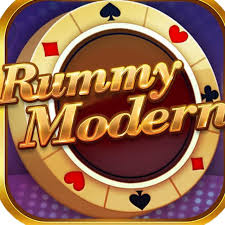Rummy Modelling, Rummy, a classic card game enjoyed by millions around the world, has been adapted into numerous variations over the years. As the game continues to evolve, so does the interest in understanding and optimizing gameplay through analytical methods. One such method is Rummy Modelling, which involves applying mathematical and statistical models to analyze and enhance rummy strategies. This article explores the concept of Rummy Modelling, its applications, and how it can improve your gameplay.
What is Rummy Modelling?
Rummy Modelling refers to the use of mathematical and statistical techniques to analyze and optimize strategies in the game of rummy. This approach involves creating models that simulate various aspects of gameplay, such as card distribution, decision-making processes, and probability calculations. By understanding these elements, players can develop more effective strategies and make informed decisions during the game.
Key Components of Rummy Modelling
1. Probability Analysis:
One of the core components of Rummy Modelling is probability analysis. This involves calculating the likelihood of certain outcomes based on the cards in play. For example, probability analysis can help players determine the chances of drawing a specific card, forming a particular set or sequence, or completing a winning hand. Understanding these probabilities allows players to make more informed decisions about which cards to keep or discard.
2. Card Distribution Models:
Card distribution models analyze how cards are likely to be distributed among players. By simulating different scenarios, players can gain insights into the probable distribution of cards and anticipate opponents’ hands. This information can be used to adjust strategies, such as deciding which cards to hold onto or when to go for a particular combination.
3. Decision-Making Algorithms:
Decision-making algorithms are used to develop strategies based on the current state of the game. These algorithms take into account various factors, such as the cards in hand, the cards visible on the table, and the actions of opponents. By modeling different decision-making scenarios, players can identify optimal strategies for different stages of the game and improve their overall performance.
4. Game Simulation:
Game simulation involves creating a virtual model of the rummy game to test different strategies and scenarios. This can include simulating multiple rounds of play, analyzing the outcomes, and refining strategies based on the results. Game simulations provide valuable insights into the effectiveness of different approaches and help players understand how different strategies perform in various situations.
Applications of Rummy Modelling
1. Enhancing Strategy:
Rummy Modelling can significantly enhance a player’s strategy by providing a deeper understanding of the game’s dynamics. By analyzing probabilities, card distributions, and decision-making scenarios, players can develop more effective strategies and make better decisions during play.
2. Improving Decision-Making:
The insights gained from Rummy Modelling help players make more informed decisions about which cards to keep, which to discard, and when to make specific moves. This improved decision-making can lead to better outcomes and increased chances of winning.
3. Training and Skill Development:
Rummy Modelling can be used as a training tool to help players develop their skills. By simulating different scenarios and analyzing the results, players can identify areas for improvement and practice their strategies in a controlled environment.
4. Competitive Play:
For competitive players, Rummy Modelling provides a strategic advantage. By using mathematical and statistical models to analyze the game, players can gain a deeper understanding of their opponents’ strategies and develop counter-strategies to enhance their performance.
How to Get Started with Rummy Modelling
1. Learn the Basics:
Before diving into Rummy Modelling, ensure you have a solid understanding of the basic rules and strategies of rummy. Familiarity with the game’s mechanics is essential for effective modeling and analysis.
2. Use Analytical Tools:
There are various tools and software available for analyzing card games. Explore options such as statistical software, probability calculators, and simulation tools to assist with Rummy Modelling.
3. Study Game Theory:
Game theory provides a framework for understanding strategic decision-making. Studying game theory concepts can help you apply analytical methods to rummy and develop more effective strategies.
4. Practice and Experiment:
Apply the insights gained from Rummy Modelling in actual gameplay. Practice different strategies, experiment with various approaches, and analyze the results to refine your skills.
Conclusion
Rummy Modelling offers a sophisticated approach to understanding and optimizing rummy gameplay. By leveraging mathematical and statistical models, players can gain valuable insights into probabilities, card distributions, and decision-making processes. This analytical approach not only enhances strategic thinking but also improves decision-making and overall performance. Whether you’re a casual player looking to enhance your skills or a competitive player aiming for an edge, Rummy Modelling provides a powerful tool for elevating your rummy game.




